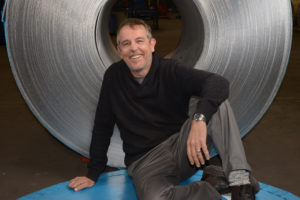- Perspective – November 2020
- State of the Nation
- Sassda Newsflash
- GPS World of Fame
- Sector Focus : Oil & Gas
- Global Insight
- Case Study
- Advertorial : Unique Welding
- Sector Focus : Holloware
- Advertorial : ‘No Flash in the Pan’
- Business Strategy
- Advertorial : Valbruna Stainless South Africa
- Maximizing the Cost-Effectiveness of Stainless Steel
- Technical Insights
- The importance of making the Correct Tool Choice
Reflections and Future Focus Imperatives
 As the end of a year approaches, one can usually look back on the preceding months and hold a clear view of what took place. However, 2020 is different. This time it is hard to reflect on a period that is still amidst turmoil and constant change, one in which each of us learns to adapt to new scenarios and, in general, try to regain some sense of normality.
As the end of a year approaches, one can usually look back on the preceding months and hold a clear view of what took place. However, 2020 is different. This time it is hard to reflect on a period that is still amidst turmoil and constant change, one in which each of us learns to adapt to new scenarios and, in general, try to regain some sense of normality.
In the stainless steel industry, we have tested our ability to adapt and we are now testing our ability to revive a sector that has a proud history of more than five decades. Seen in the light of an already weak economy even before the COVID-19 pandemic, this will be a tough task and will require every bit of resilience, strategic thought, and a combined effort from all sectors of industry.
It can be said that 2020 has allowed us to re-evaluate where we are, not only as an industry or as an association, but also as individual links in the stainless steel value chain. At Sassda we have had to scrutinise internal efficiencies, cost-effectiveness, and productivity. More importantly, we needed to adjust to the new realities and global shifts.
On the global front, the International Stainless Steel Forum (ISSF) has released figures for the first half of the year which show that stainless steel melt shop production decreased by 9.4% year–on–year to 23.7 million metric tons. The USA and Asia (excluding China and South Korea) experienced a contraction of more than 20%. The grouping for Brazil, Russia, South Korea, Indonesia, and South Africa showed an 8,4% contraction.
Statistics for the apparent consumption of stainless steel primary product in South Africa show an annual decline of 28% based on August 2020 figures. This underscores the fact that the local industry is under different pressures than the rest of its peers in the global perspective. Structural problems in the South African economy and policy procedures are not contributing to an easy revival and much will have to be done to strengthen the local value chain to be in a position of sustainable growth and the creation of appropriate jobs.
While the country awaits real implementation of sound policies and industry initiatives, such as the Industrial Development Plan and the Steel Master Plan, Sassda continues its efforts to liaise with government in this regard. Simultaneously, we continue to add value to membership with increased training initiatives and accessible, hands-on support.
Our ’new normal’ right now sees us currently servicing more members in one month than we would in one annual quarter prior to the beginning of 2020. The age of general connectivity has allowed us to stay abreast of developments across a wide range of new contacts and collaborations with peers and organisations which are supportive to our mandate to increase the volumes of locally converted stainless steel.
Stainless steel remains the preferred material in an array of applications where durability and hygiene are of critical importance, and this should give us hope. Reports from fabricating members show encouraging signs of recovery and some niche sectors are doing well. We also still believe that developments in Sub-Saharan Africa in terms of trade agreements can create new markets for our members; localisation or import replacement can create opportunities for local procurement and job creation; not to mention the potential that might still await from the Mozambican gas fields.
That the road to recovery remains possible is shown in our regular member survey on market outlooks. The latest Sassda index shows a member confidence level of 50,8% - the highest since May 2019. In this issue, we will illustrate why stainless steel remains a cost-effective alternative for virtually every application and how you should go about making sure that you use the optimal grade. Even in tough times, stainless steel remains Simply Brilliant!

